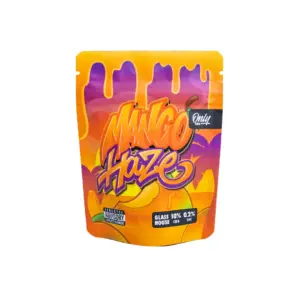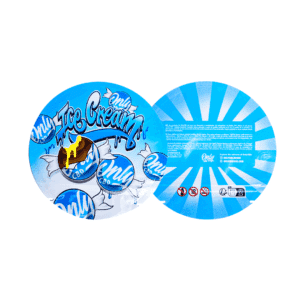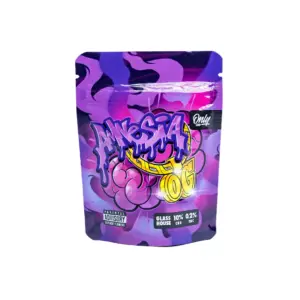Nine ways scientists are targeting the endocannabinoid system with synthetic strains and drugs.
In recent years, cannabis has been at the center of one of the most important developments in modern science, which has significantly advanced our understanding of health and disease.
Research into the effects of marijuana led directly to the discovery of an important biochemical signaling system in the human body, the endocannabinoid system, which plays a pivotal role in regulating a wide variety of physiological processes affecting mood, blood pressure, bone density, metabolism, intestinal strength, energy level, and how we experience pain, stress, hunger, and much more.
“By using a plant that has existed for thousands of years, we discovered a new physiological system of immense importance,” says Israeli scientist Raphael Mechoulam. “We wouldn't have been able to get there if we hadn't observed the plant.”
Described by Mechoulam as “a medicinal treasure,” cannabis contains more than 100 unique biologically active compounds known as “cannabinoids,” including tetrahydrocannabinol (THC) and cannabidiol (CBD). THC causes the euphoria for which cannabis is famous, while CBD does not; both have significant therapeutic attributes.
In addition to the phytocannabinoids produced by the plant, there are endogenous cannabinoids, molecules similar to marijuana, that are naturally produced in the human brain and body. There are also synthetic cannabinoids created by pharmaceutical researchers, who are developing new drugs targeting the endocannabinoid system with the goal of achieving therapeutic benefits.
Some of these innovative synthetic compounds activate the same cannabinoid receptors, CB1 and CB2, in the brain and body and respond pharmacologically to THC and other components of cannabis.
Medical scientists are also experimenting with synthetic drugs designed to improve "endocannabinoid tone" without directly binding to cannabinoid receptors. Here are nine strategies scientists are pursuing in an effort to harness the healing potential of the endocannabinoid system:
1. ISOLATED PLANT MOLECULE CANNABINOIDS
Dronabinol, marketed in pill form as Marinol, is a single-molecule tetrahydrocannabinol (THC) extract combined with sesame oil. It was rapidly submitted for Food and Drug Administration (FDA) approval in 1985 in response to growing patient demand for medical marijuana.
Other THC preparations are also on the FDA's radar, including Syndros, a liquid THC product produced by Insys. But patented single-molecule THC is a poor substitute for whole-plant cannabis.
Despite being highly psychoactive and potentially dysphoric, pharmaceutical THC is legally available in all 50 states as a prescription drug. Cannabidiol, unlike pure THC, is not yet legal in all 50 states. But CBD may soon become a legal drug, as the FDA is poised to approve Epidiolex, a botanically derived anti-seizure medication produced by GW Pharmaceuticals. Epidiolex is pure CBD with a small amount of cannabidivarin (CBDV), a “minor” cannabinoid that also possesses potent anti-epileptic properties.
Along with the imminent arrival of pharmaceutical CBD, several research and development companies have begun harvesting single-molecule cannabinoids, such as CBDV, from a yeast substrate. As this biotechnology improves, drug developers and pharmacists will have access to numerous single-molecule cannabis compounds.
2. SYNTHETIC CANNABINOID ANALOGUES
Scientists have created synthetic analogs of plant cannabinoids for research purposes and for commercial sale and distribution. Nabilone, a synthetic analog of THC, was developed by Eli Lilly and Co. as a treatment for nausea and vomiting caused by chemotherapy.
Marketed under the brand name Cesamet, this synthetic cannabinoid is used as a complementary therapy for the treatment of chronic pain in Canada and other countries. Clinical trials of nabilone indicated some efficacy for fibromyalgia, Parkinson's disease, nightmares related to post-traumatic stress disorder (PTSD), irritable bowel syndrome, and multiple sclerosis.
Researchers are using several synthetic analogs to investigate the biochemical pathways and molecular mechanisms of the endocannabinoid system. Some of these compounds (such as WIN55,212-2 and CP55,940) bind to both cannabinoid receptors, CB1 and CB2, much like THC. Other experimental drugs target only one type of cannabinoid receptor and not the other. agonist Cannabinoid binds to a cellular receptor and triggers the initiation of signal transduction that modulates several physiological processes and protects neurons from toxic insults. antagonist cannabinoid binds to a cell receptor and prevents it from signaling.
3. SYNTHETIC CANNABINOID ANTAGONISTS
CB1 cannabinoid receptors, which mediate the psychoactive effects of THC, are concentrated in the brain and central nervous system. When THC binds to CB1, it can make a person feel high and hungry. Scientists have confirmed that "cravings" are related to the stimulation of CB1 receptors in areas of the brain that regulate hunger and satiety. When activated, CB1 receptors trigger appetite; when blocked, they reduce it.
“SR141716,” a synthetic CB1 antagonist developed by French pharmaceutical giant Sanofi-Aventis, was initially used as a research tool: by blocking CB1 and monitoring which functions were altered, scientists advanced their understanding of the endocannabinoid system.
Sanofi strategists believed they had invented the perfect diet pill and promoted SR141716 as an appetite suppressant in Europe. But the diet drug, sold as "Rimonabant," proved to be too pervasive a tool. Before long, the synthetic CB1 antagonist was withdrawn from circulation due to its dangerous side effects: high blood pressure, nausea, vomiting, anxiety, mood swings, depression, headaches, seizures, sleep disorders, and an increased risk of suicide. At the very least, the CB1 antagonist debacle provided vivid evidence that a well-functioning endocannabinoid system is essential for good health.
4. PERIPHERALLY RESTRICTED CB1 AGONISTS
CB1 cannabinoid receptors, the most predominant protein receptors in the human brain, influence many neurological functions, including the mood-altering effects of marijuana. CB1 receptors are also expressed in the enteric nervous system (the gut), liver, kidneys, heart, and other peripheral organs. Stimulation of CB1 receptors can provide significant therapeutic benefits, but THC's psychoactivity limits its medical usefulness, according to Big Pharma's catechism, which defines the CB1-mediated marijuana "high" as an adverse side effect that drug designers should avoid if they hope to gain regulatory approval for their patented synthetic innovations.
Therefore, pharmaceutical researchers created peripherally restricted CB1 agonists (such as AZ11713908) that only activate CB1 receptors outside the central nervous system, but do not cross the blood-brain barrier.
A peripherally restricted CB1 agonist won't cause side effects, such as disconcerting dysphoria or useless euphoria. But the FDA has never approved such a compound for therapeutic use.
5. SELECTIVE CB2 AGONISTS
Scientists have been tracking another type of synthetic cannabinoid, a "selective CB2 agonist," which will surround the brain while acting on the peripheral nervous system, where CB2 receptors are concentrated. CB2 receptors regulate immune function, pain perception, and inflammation.
Modifications with synthetic compounds (such as HU 308 and JWH 133) that selectively stimulate CB2 receptors increase the possibility of healing without the euphoria because CB2 receptors are located primarily outside the brain and therefore do not cause psychoactivity.
Cannabinoid researchers have their eyes on the ultimate prize, the pharmaceutical holy grail: a non-addictive painkiller that doesn't cause adverse side effects. Animal experiments focusing on the CB2 receptor initially showed promise.
So far, however, pharmaceutical companies have been unable to synthesize clinically effective selective CB2 compounds, though not for lack of trying. "If drug discovery is a sea, then CB2 is a rock surrounded by shipwrecked projects," commented Italian scientist Giovanni Appendino.
6. WATER-SOLUBLE CANNABINOIDS
In their natural form, plant cannabinoids and endocannabinoids are oleaginous, hydrophobic substances that do not dissolve in water. However, these lipid molecules can be structurally altered to become water-soluble without diminishing their therapeutic properties.
Scientists have developed several ways to synthesize water-compatible derivatives of THC and other cannabinoids that are more bioavailable and therefore potentially more potent than their naturally occurring oily counterparts.
The first water-soluble version of THC was created in 1972. Subsequent research discovered that water-soluble cannabinoid derivatives could reduce intraocular pressure in rabbits. A water-soluble cannabinoid ester, "O-1057," showed stronger analgesic properties than THC in preclinical testing.
Online retailers claim to sell water-soluble CBD formulated as a nanoemulsion. Pure CBD delivered through nanotechnology is supposed to provide exceptionally high bioavailability and a restorative effect compared to a hydrophobic CBD oil extract.
However, to achieve therapeutic efficacy, a CBD strain typically requires a much higher dose than a whole-plant CBD concentrate, and this factor can negate the purported benefits of nanoemulsified single-molecule CBD.
7. ALLOSTERIC CANNABINOID RECEPTOR MODULATORS
Because direct and complete stimulation of cannabinoid receptors in the brain can cause undesirable psychoactive effects, scientists have developed synthetic compounds that change the shape of the CB1 receptor and influence how it transmits a signal without causing a THC-like euphoria. These compounds, known as allosteric modulators, can either amplify or decrease a receptor's ability to transmit a signal.
A “positive allosteric modulator” increases the potency and/or efficacy of CB1 receptor activation by anandamide and 2AG (the two major endogenous cannabinoids), thereby enhancing the protective effects of the endocannabinoid system.
Scientists at the University of Aberdeen in Scotland synthesized a positive allosteric modulator of CB1 to treat pain and neurological disorders. When researchers at Virginia Commonwealth University tested this experimental drug (“ZCZ011”) in mice, it reduced inflammatory pain by increasing the CB1 receptor's response to anandamide.
However, allosteric effects are rarely consistent across species, significantly hampering drug development in this area.
8. INHIBITORS OF ENDOCANNABINOID METABOLIZING ENZYMES
Medical scientists are experimenting with designer synthetic drugs to enhance endocannabinoid tone without binding directly (or allosterically) to cannabinoid receptors.
Pharmacological enhancement of endocannabinoid signaling can be achieved by inhibiting fatty acid amide hydrolase (FAAH) and/or monoacylglycerol lipase (MAGL), the catabolic enzymes that break down the brain's own marijuana molecules, anandamide and 2AG, respectively. Simply put, less FAAH and MAGL means more anandamide and 2AG, resulting in increased cannabinoid receptor activity throughout the body. Drugs that suppress endocannabinoid-metabolizing enzymes indirectly stimulate cannabinoid receptor signaling, producing natural euphoria without the vivid psychoactive effects associated with synthetic and plant-based CB1 agonists.
Preclinical research suggests that indirect modulation of endocannabinoid signaling could become a treatment option for various inflammatory conditions and stress-related disorders. Inhibition of FAAH and MAGL has been shown to relieve pain, anxiety, colitis, hypertension, opiate withdrawal, diarrhea, and arthritis in animals. While drug developers are investigating synthetic FAAH inhibitors (such as URB597) and MAGL inhibitors (such as JZL 184), a person need look no further than the kitchen spice rack to find phytonutrients that regulate endocannabinoid tone by inhibiting the same catabolic enzymes. Nutmeg, one of the many culinary spices that interact with the endocannabinoid system, inhibits the breakdown of anandamide and 2AG, the brain's own marijuana.
- ENDOCANNABINOID REUPTAKE INHIBITORS
Another way to increase endocannabinoid tone involves delaying the reuptake of anandamide and 2AG. Scientists have synthesized reuptake inhibitors (such as AM404) that target transport molecules known as fatty acid-binding proteins. These membrane-penetrating fatty acid-binding proteins facilitate the intracellular transport and reuptake of endogenous cannabinoids.
By blocking access to these critical transport molecules, synthetic reuptake inhibitors increase endocannabinoid levels at brain synapses. This results in increased cannabinoid receptor signaling and endocannabinoid-induced protective effects.
Furthermore, THC and CBD inhibit endocannabinoid reuptake. Improving endocannabinoid tone through reuptake inhibition may be a key mechanism by which plant cannabinoids confer protective anticonvulsant and antineurodegenerative effects, as well as numerous other health benefits.

















